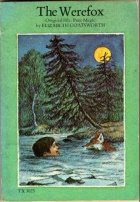Tom and the Two Handles by Russell Hoban
 Tom and the Two Handles by Russell Hoban. Pictures by Lillian Hoban (USA) Out of Print
Tom and the Two Handles by Russell Hoban. Pictures by Lillian Hoban (USA) Out of PrintAn I Can Read Book
Pages: 64 pages
Ages: 7+
Finished: June 23, 2010
First Published: 1965
Publisher: Harper & Row
Genre: easy reader
Rating: 3.5/5
First sentence:
"What's the matter?" said Father to Tom.
Acquired: Bought and own my copy.
Reason for Reading: My son read aloud to me for his reader.
Russell and Lillian Hoban are a husband/wife team most popularly known for their series of books about Frances the bear. According to the bio on the back jacket flap of my copy this is their 9th book together at this point in time. This book is currently out of print and will stay that way as its way of illustrating its message is not what would be called acceptable by the majority of the masses today.
Tom comes home with a bloody nose that his friend, Kenny, has given him and his father explains that every problem has "two handles", two ways of looking at and fixing it: a bright side and a dark side. Tom takes his advice and comes home again the next day with a bloody nose. He keeps getting advice from his father both on why he loses the fights, tips on how to fight better and sage advice on fixing the problem without fighting. When Tom tries to explain things to Kenny it just never works out the way his father made it sound. For example, the time Tom is upset about always losing his father says "You win some, you loose some." Tom tells Kenny he doesn't want to fight anymore, everything's ok, you win some, you loose some. Then the friend turns around and says hey what do you mean I loose some? I always win! and Tom comes home with another bloody nose. (My son found this hysterical.) In the end, Tom and Kenny stop being best friends, Tom takes up practicing with a punching bag in the back yard and gains confidence in his fighting skills though he knows he'll never be as good as Kenny. Then he goes over to ask Kenny to be best friends again, who agrees saying Tom was the one who always started the fights anyway. Well, they end up having another fight but this time Tom wins and he sits on Kenny and finally explains the "two handles" way of looking at things when you're the one who lost. Kenny finally understands and all's well that ends well.
My son had a riot reading this book. To him it was pure comedy and plain silliness. I pretty much let it go at that, though I did try to see that he got the message of the "two handles" and we discussed fighting. He immediately saw the difference in this story that obviously took place in the olden days (the cars placed it in time) and today's reality by noting that when people fight today they use weapons like chains, knives and hard sticks (he's seen it on TV).
A fun book that certainly reads differently today than its original intentions in its day. But also an interesting look into the past when there was a different mindset and culture where something that has become such a problem today (schoolyard violence) could be a simple case of "boys being boys" having a few rounds of fisticuffs. My rating is based on a combination of our enjoyment of the book today and the book's relevance as a product of its time.


Comments
Post a Comment